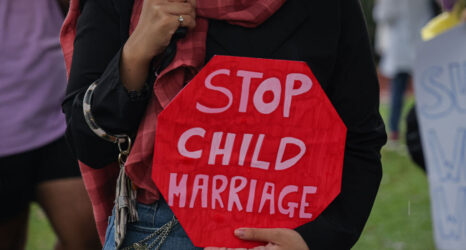Lonnie Feather was sitting on the couch when her boyfriend walked in, covered her face with a pillow and shot her four times. Two bullets grazed her skull, one went into her neck and one hit her cheek. For the next four hours, Lonnie played dead on the couch hoping not to bleed to death. When her boyfriend—busy making a shopping list of items needed to dispose of her body: duct tape, plastic bags, etc—left to answer the door, Lonnie quickly dialed 911. A SWAT team rescued her three hours later. Somehow Lonnie survived incredible physical trauma, but not without deep and permanent scars to her face. Her emotional scars will also last forever, but are getting better with time.
Lonnie’s story is far from unique. She is one of too many victims of gun violence in the United States. In 2008, 7,451 women were treated in emergency rooms across America for gunshot wounds, 66 percent of which were assault-related. In 2007, 1,865 women were murdered with firearms. Firearms are more common in abusive homes, and batterers often threaten their victims with guns, sometimes implicitly, by cleaning, holding or loading guns during arguments.
We don’t need stats to understand how much gun violence affects women; we see it on the evening news. Sometimes it’s a girl who’s accidentally shot by her brother, like 10-year-old Emilee Randall who was killed when her 14-year-old brother pointed his dad’s revolver at her; sometimes it’s a stray bullet from a gang shooting that hits a girl playing in her yard, like 8-year-old Katherine Cook; sometimes it’s a park ranger shot in a National Park after Congress passes a law allowing loaded weapons in those parks, like Margaret Anderson, murdered on New Year’s Day near Mount Rainer. And sometimes it’s a Congresswoman, like Gabrielle Giffords, who was shot at point-blank range in the head by a disturbed man (but legal gun owner) as she greeted constituents in a Safeway parking lot.
In 1986, I graduated from Columbine High School, 13 years before it became a painful symbol of gun violence. My former basketball coach Dave Sanders was murdered that day, along with 12 other students. The massacre affected me deeply. I couldn’t believe such madness could happen at my safe, suburban, picture-perfect high school. At Dave’s memorial service, one of the speakers said that we can’t control what happens, but we can control how we react to it.
Ever since, I’ve tried to do what I can to raise awareness of gun violence. I met Lonnie, and several women like her, when I wrote a book called Beyond the Bullet about the impact that gun violence has on regular people. On Jan. 8, the one-year anniversary of Giffords’ shooting outside that Arizona Safeway, as part of the national Too Many Victims remembrance, I’ll light a candle along with hundreds of other women around the country to bring light to the problem of gun violence and the toll it has taken on women. I will light a candle for those women I’ve interviewed, still dealing with unspeakable loss years after the worst day of their lives. I will light a candle for Emilee, Katherine and Gabrielle. I’ll light a candle for Lonnie Feather, whose courage and strength are quite simply inspirational.
Read More:





